NASA and Skunk Works Unveils Experimental Vehicle That Turns Sonic Booms Into Sonic Thumps
Are we on the verge of a commercial supersonic comeback? America’s space agency is determined to make it so by turning sonic booms into a mere whisper. Meet NASA’s X-59.
The 99 ft long purpose-built technology-demonstrator jet was rolled out today and formally introduced to the world. It could help change the future of supersonic aviation forever.
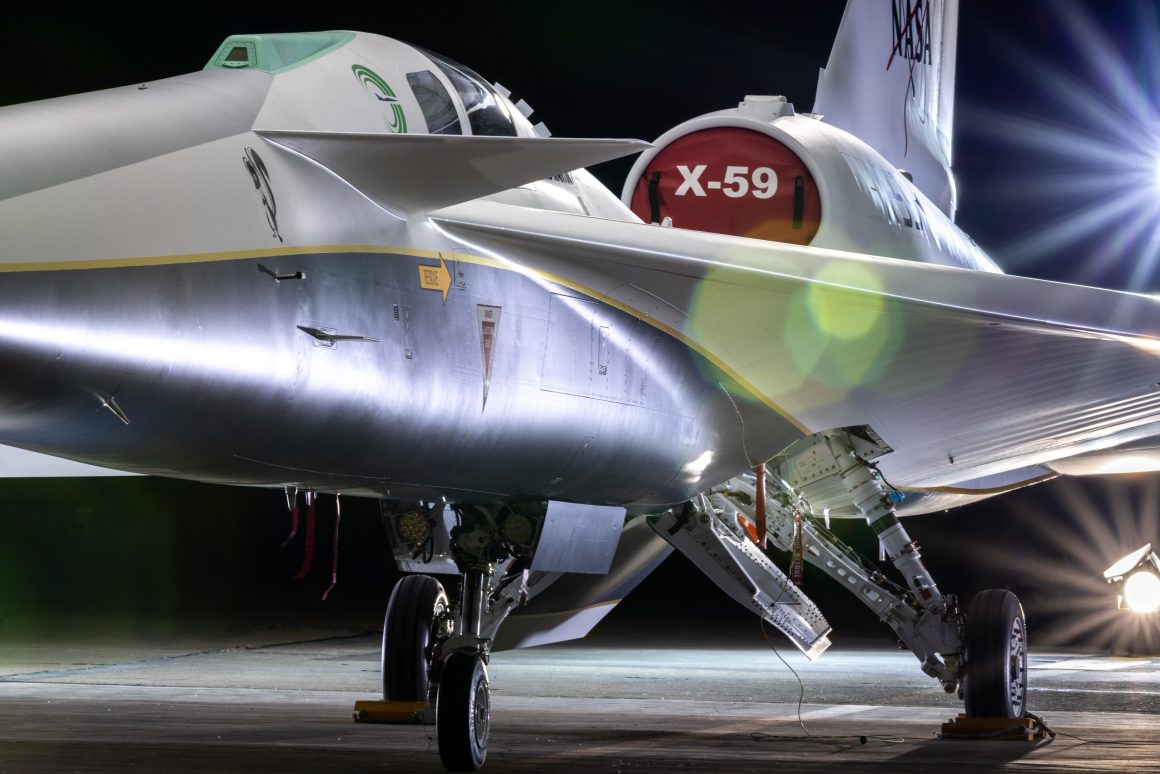
Five years of development with Skunk Works
The aircraft has been in development now for about 5 years. It was designed and built by Lockheed Martin at its famed Skunk Works in Palmdale, CA. NASA awarded LM a nearly $250 million contract for its development in 2018.
To understand why the technology in the X-59 is so important, it is important to understand some of the limitations and regulations around supersonic flight. Supersonic flight creates loud sonic booms. These booms not only sound like an explosion, they can damage windows and even buildings in some cases.
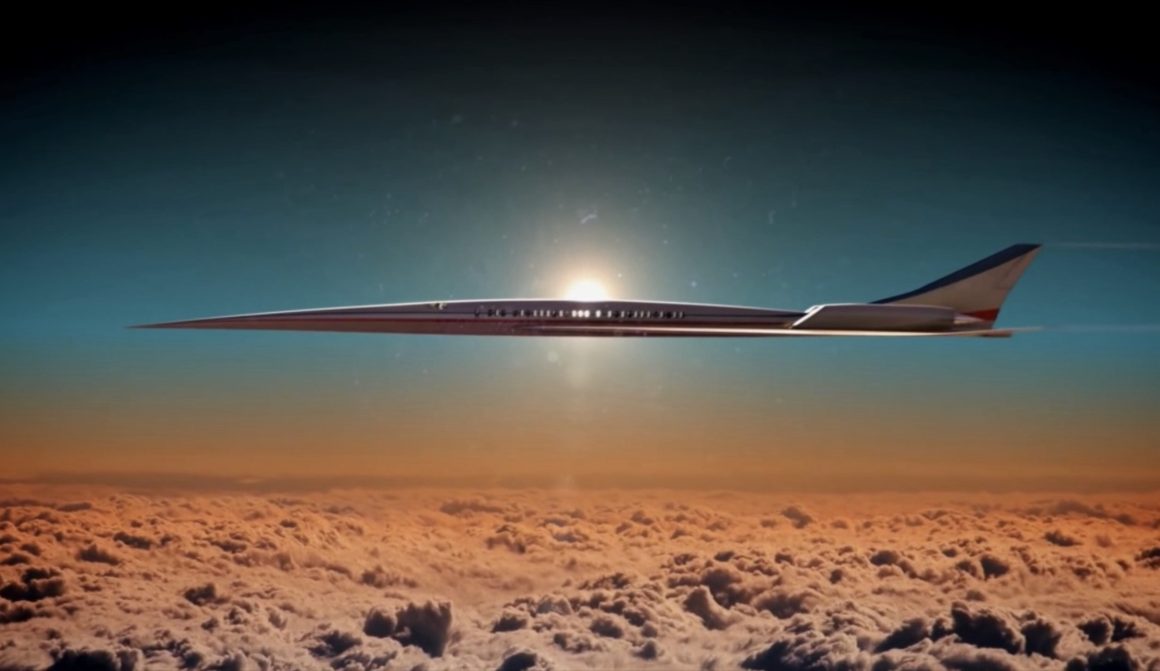
Due to the potential hazards and annoyances, the federal government banned commercial flight over land over 50 years ago. The ban was strongly influenced by public opinion in cities where supersonic military jets were flown.
Simply put, residents didn’t like being startled or having their windows and walls rattling anytime a supersonic aircraft passed by.
Above, watch NASA and Skunk Works unveil the X-59
This limitation had an outsized impact on the evolution of commercial supersonic flight. Concorde gambled on supersonic travel being allowed over land, but was doomed as a profitable enterprise because of the ban. That’s also why we haven’t seen any supersonic commercial travel since the Concorde retired in 2003.
Turning sonic booms into sonic thumps
X-59 is the centerpiece of NASA’s bigger ‘Quesst’ mission, which again aims to turn sonic booms into barely noticeable thumps. The program’s goal envisions to make a giant sonic boom more like the sound of a car door closing from across a parking lot, equivalent to approximately 75 Perceived Level decibel (PLdB).
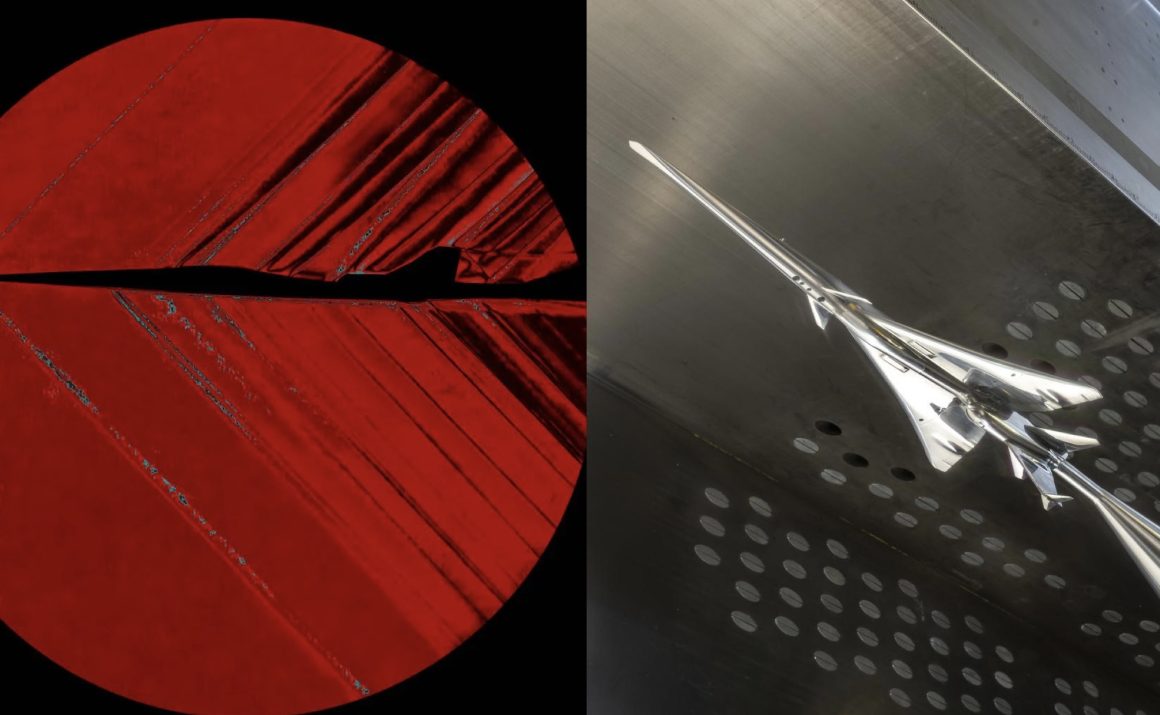
The jet’s unique shape spreads out the supersonic shockwaves. In wind tunnel tests, Schlieren images were taken of a X-59 model to give engineers visuals of the shock waves and their positions as air moved around it.
The model was put through several weeks of wind tunnel tests, producing encouraging results that matched computer models. All that was left was to build it.
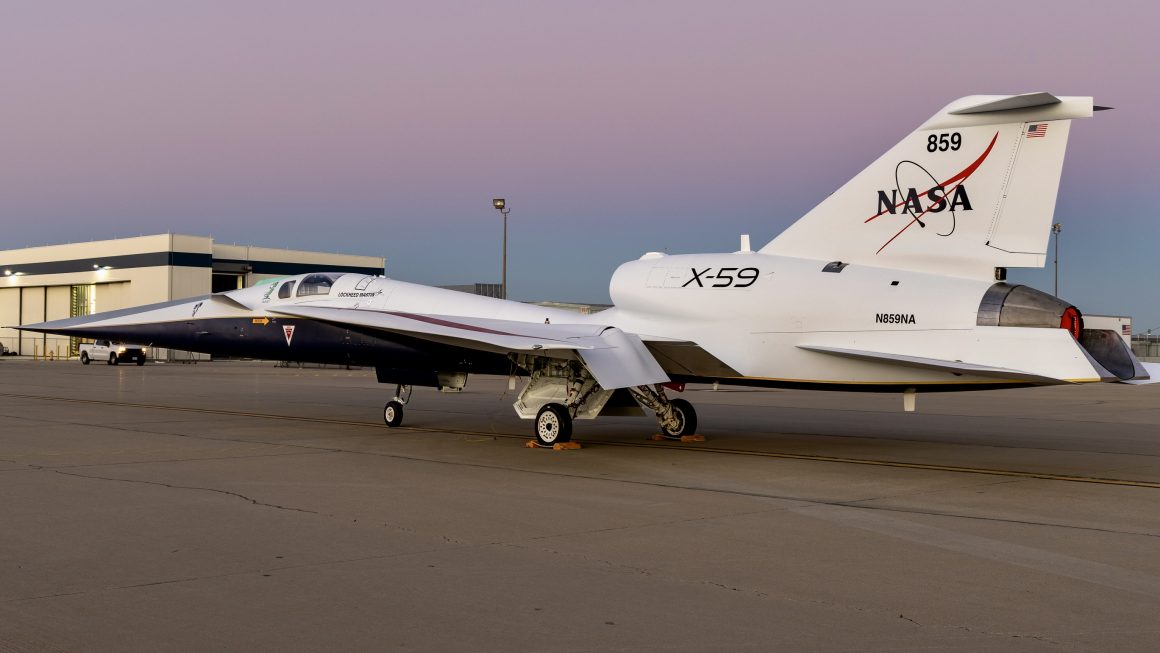
The aircraft is powered by a single F414-100 GE engine. It’s mounted on top of the airframe, so that any shockwaves coming off it are directed away from the ground. It’s capable of reaching around 950 mph, with an anticipated cruising altitude of 55,000 ft.
X-59’s max gross weight is 25,000 lbs. it can carry 8,700 lbs of fuel and 600 lbs of payload. Skunk Works says it is capable of Mach 1.4.
Forward-facing Windows Prevent Quiet Supersonic Flight… So They Fixed That
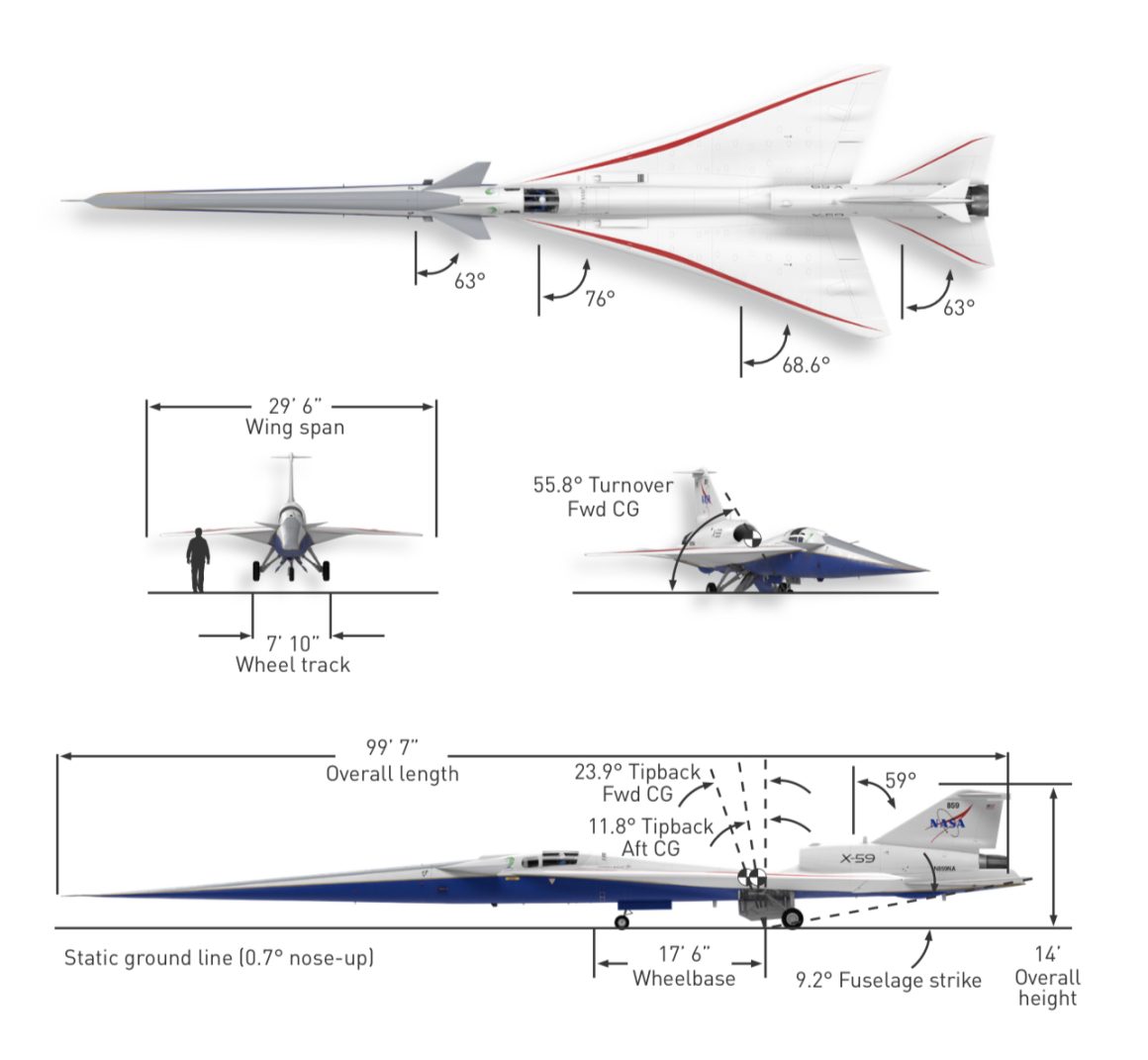
The X-59’s long skinny nose alone is almost 1/3 of the plane’s length. There’s no forward-facing window for the pilot either. That was one of the big design changes to reduce sonic booms, eliminating front-facing windows entirely. So how will they see where they are going?
The cockpit displays and lighting system includes a new NASA-developed External Vision System (XVS), displayed on the top screen. It gives the pilot a virtual window.
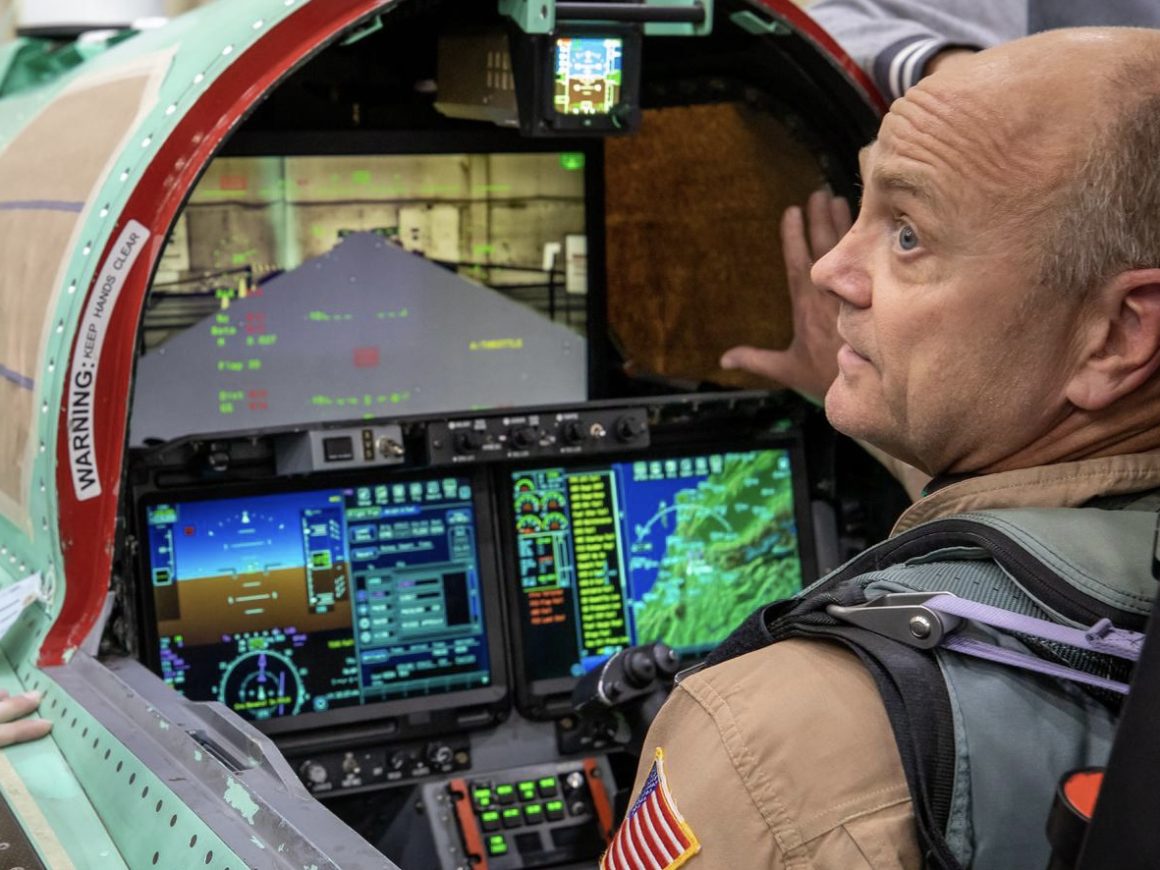
A 4K monitor displays complex computer-processed imagery from two cameras mounted above and below the X-59’s nose.
The avionics flight displays, which show navigation information and status of the aircraft, are displayed on 2 screens below the XVS.
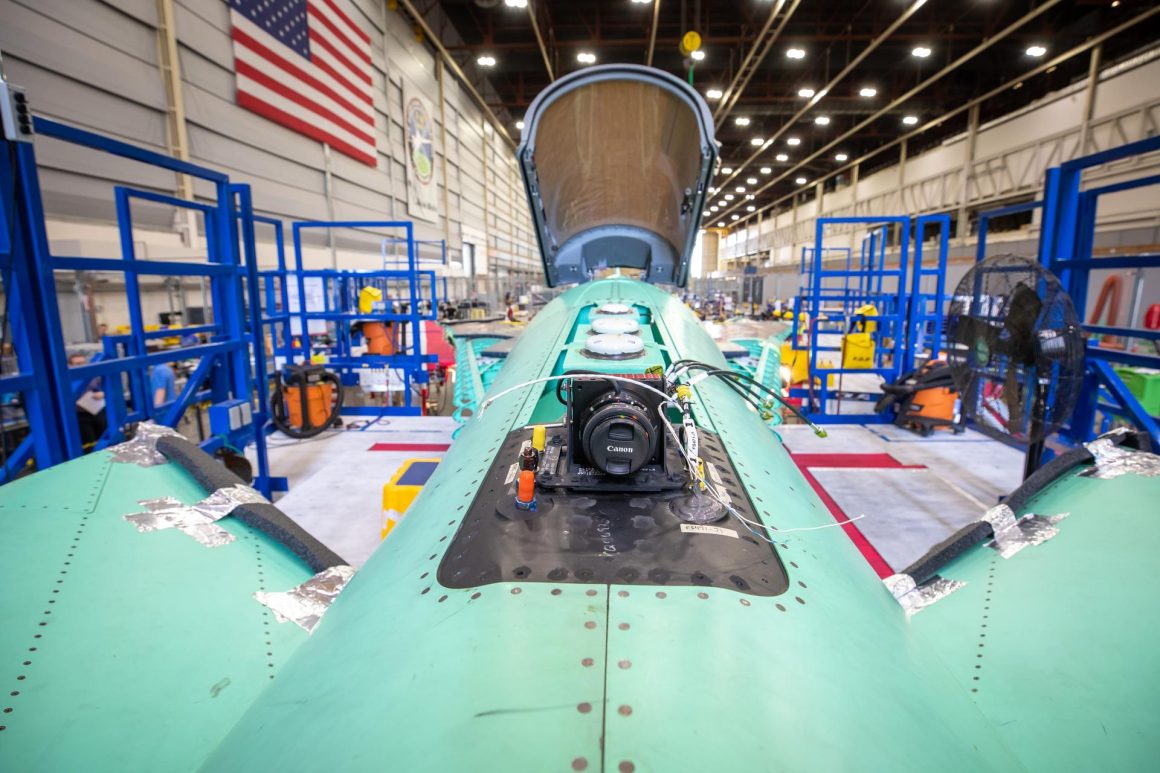
The jet’s 29.5-foot-wide wing holds the aircraft’s fuel systems and most of its control systems.
Test pilots have been using simulators at NASA’s Armstrong Flight Research Center to train for the X-59.

Lifting the ban for supersonic commercial flight over land
Throughout 2024, NASA will fly the X-59 supersonic over the test range at Armstrong Flight Research Center, to prove it can produce a quieter sonic thump and is safe to fly in the National Airspace System. More than 175 ground recording systems will measure the sound generated.
Starting in 2025, NASA will fly the X-59 over several large communities, to get their feedback. The space agency wants to survey what the public hears as it flies overhead. They will then share the data and reaction with law makers and regulators.
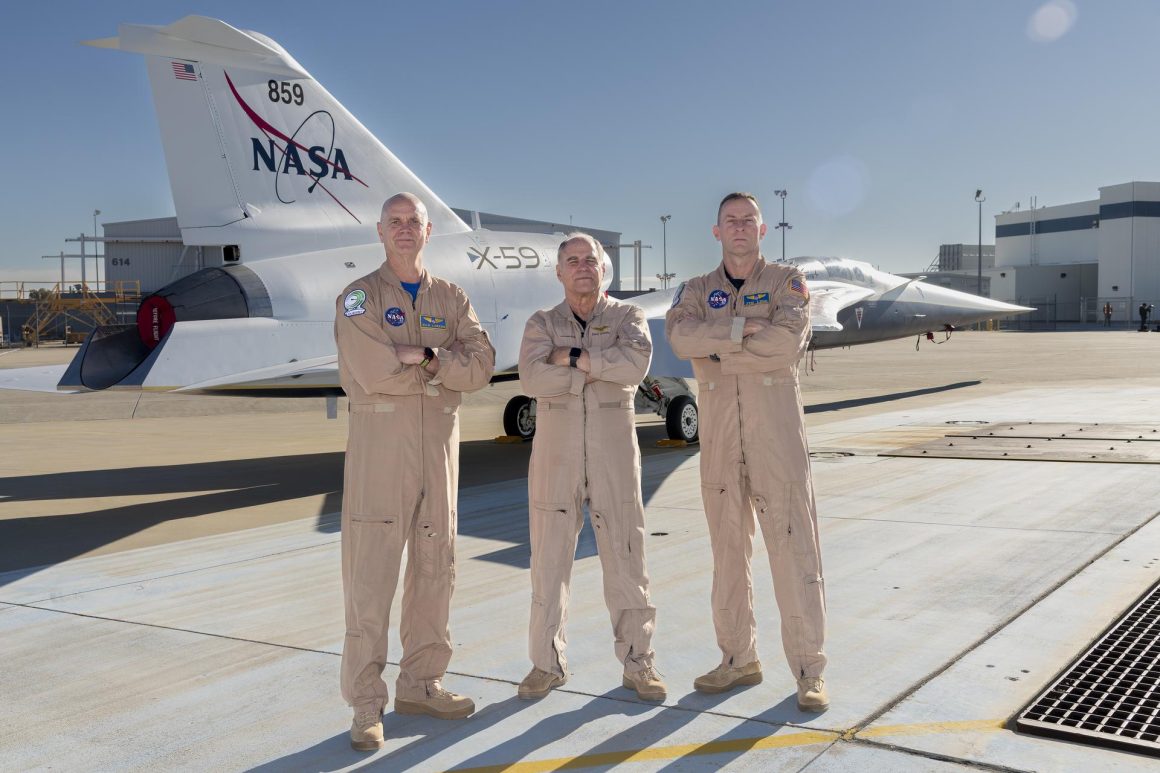
The hope is that the ban on supersonic commercial flight over land will be lifted, or at least establish acceptable commercial supersonic noise standards. Doing so would open a whole new market for air travel, and cut travel times in half. Projects like Boom Supersonic could become more commercially viable based on NASA’s efforts.
“It’s thrilling to consider the level of ambition behind Quesst and its potential benefits,” said Bob Pearce, associate administrator for aeronautics research at NASA HQ. “NASA will share the data and technology we generate from this one-of-a-kind mission with regulators and with industry. By demonstrating the possibility of quiet commercial supersonic travel over land, we seek to open new commercial markets for U.S. companies and benefit travelers around the world.”
You can be part of the first test flight
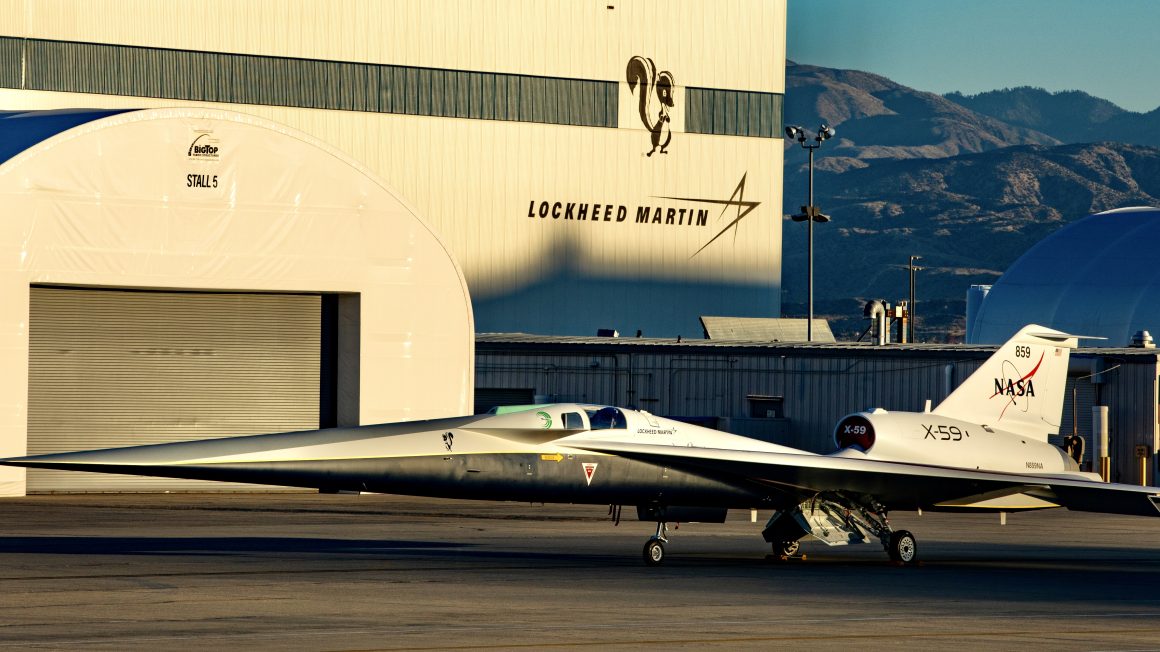
NASA is inviting the public to sign up to get their own virtual boarding pass for the X-59’s first flight. Via NASA’s Flight Log experience, names will be put on a storage device that will be carried personally by the test pilot.
Participants will also receive a printable boarding pass, and the flight will be entered into their logbooks.
